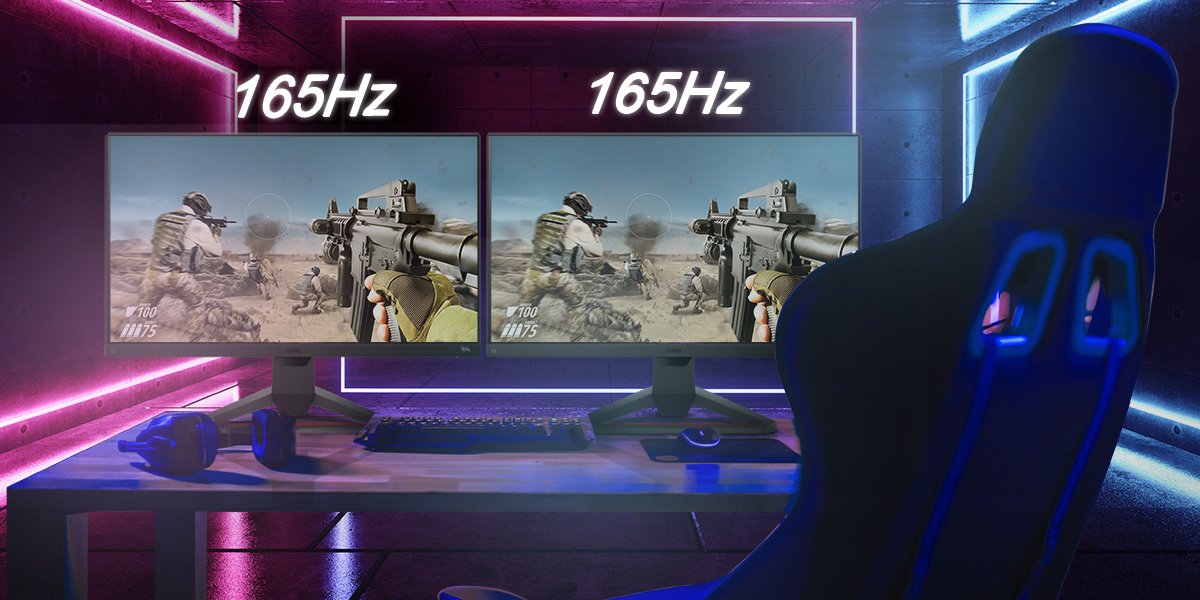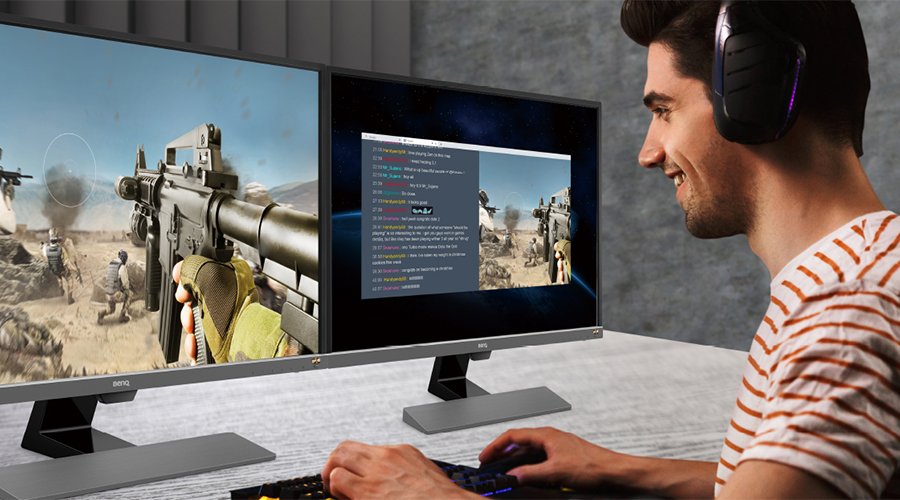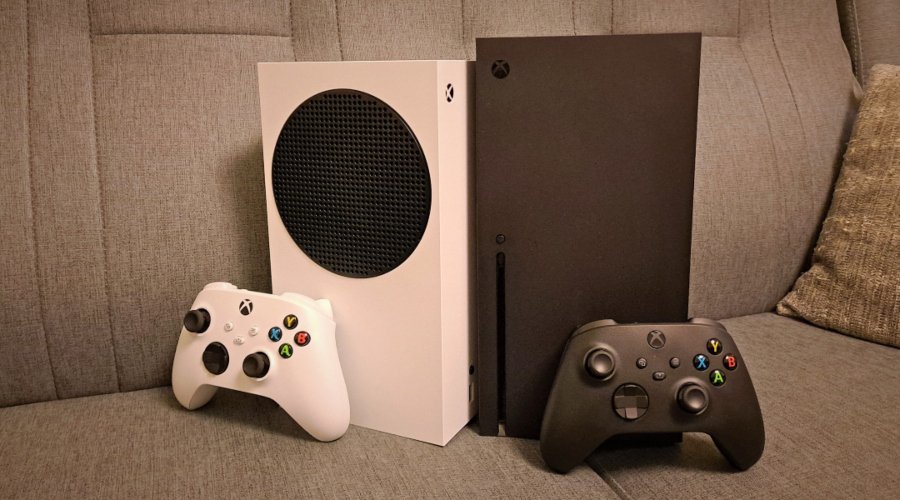Resolution: this one’s very important. There’s nothing stopping you from pairing a 1080p monitor with a 4K one, but you won’t be able to extend the display, and even duplicating will cause issues. Please stick with monitors of identical resolution, like two 165Hz 1080p gaming monitors.
Graphics card: while 165Hz in 1080p on a single screen is fine for most graphics cards released in the last few years, when you dual monitor you should prepare for a doubling of graphics load. Even with the best scaling, which supposedly “tricks” the GPU into thinking two screens are actually just one, the golden rule for absolute peace of mind is one GPU per screen. Since that’s not viable now with the effective phasing out of SLI and CrossFire, you need to have a reasonably powerful GPU for two 1080p monitors while expecting 165Hz. Those two monitors have a total resolution of 1920 x 2160 in extended mode, or 4.1 million pixels theoretically. That’s twice the pixel count of 1080p.
To drive those two monitors without issues you’ll need a capable graphics card providing an overhead, or a performance safety net. An RTX 3060 or RX 6700 will do, but if you can’t find those then an RTX 2070 or RX 580 should also be enough. In terms of VRAM, you want to be over 6GB, which should not be a problem.
Cables: as of this writing, we still can’t recommend HDMI for dual monitor set ups. While HDMI 2.1 does support daisy chaining, it’s not common yet nor as mature as the support DisplayPort provides for linking monitors. Connecting your desktop to the first monitor via DisplayPort 1.4 and that monitor to the second using DisplayPort 1.4 as well gives you ample bandwidth for 1080p 165Hz and 1440p 144Hz with nearly no latency incurred. VESA’s DisplayPort is by far the preferred standard when it comes to dual monitors, but we expect HDMI to improve a lot in the near future.
Since we assume you’ll have your dual monitors in a desktop environment, there’s no need to buy long DisplayPort cables. Anything longer than 1.5m isn’t necessary, and can only reduce signal fidelity, even if just a little.






